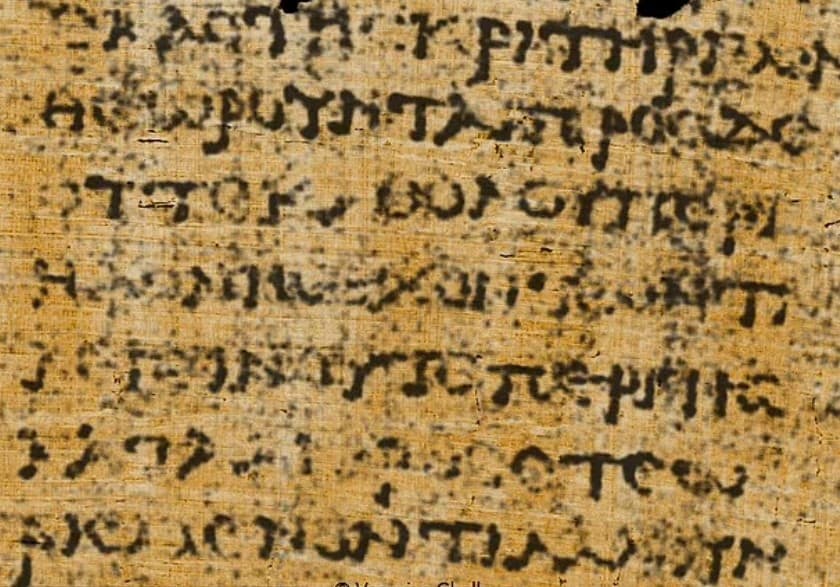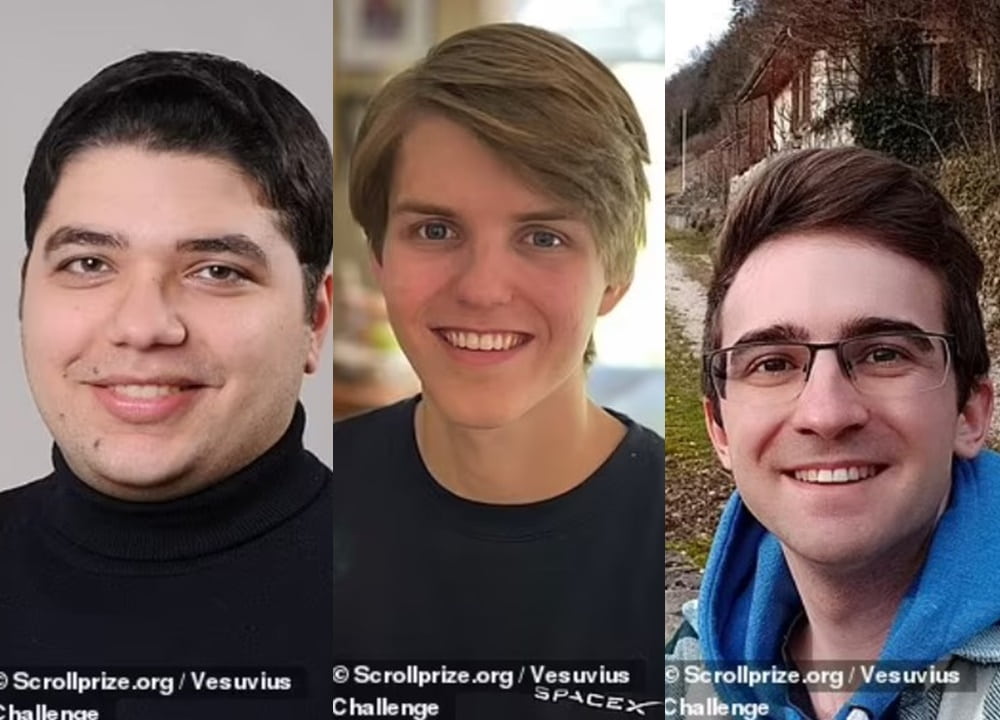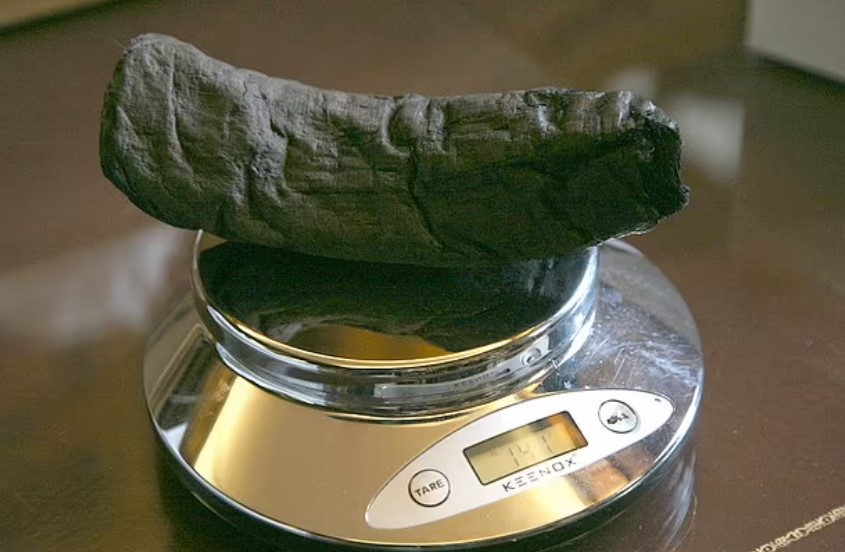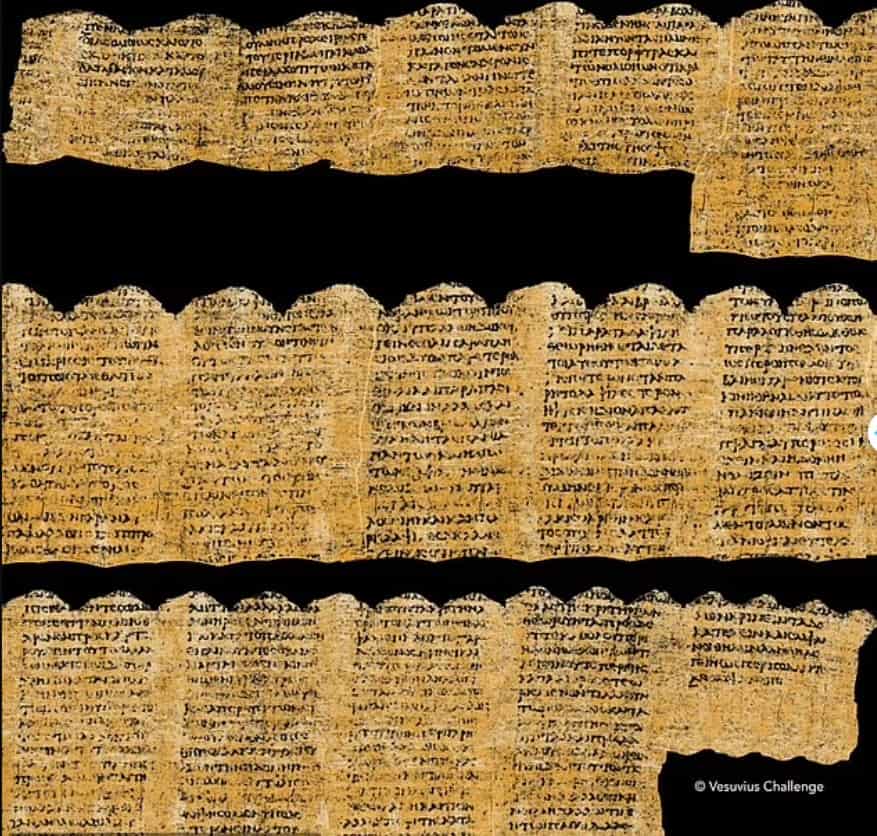A group of students has achieved a remarkable achievement by decoding a significant portion of the Herculaneum papyri using artificial intelligence (AI).
This impressive accomplishment has earned them a prestigious prize of $700,000.

Three talented students decoded 5% of the Herculaneum papyri by using AI technology.
Three students Youssef Nader, Luke Farrritor, and Julian Schilliger used algorithms to scan artifacts and AI to read ink on both the surface and hidden layers of unopened scrolls.
According to the announcement, the group of students decoded 2,000 words on the famous Herculaneum Papyri, this number corresponds to 5% of the scroll.
This code-breaking operation is part of the Vesuvius Challenge initiated last March by Brent Seales, a computer scientist at the University of Kentucky.
A team of three students successfully brought home the prize money of $700,000 after decoding 5% of the content of the Herculaneum papyri.

Immediately after the huge victory, Luke Farritor and Youssef Nader continued to take home an additional $40,000 reward when they revealed.
Herculaneum papyri was found in 19752 since it disappeared in 79 AD during an eruption
The famous Herculaneum papyri was buried in an eruption of Mount Vesuvius in 79 AD. This disaster destroyed entire areas in Pompeii, Herculaneum, Torre Annunziata, and SStabiae.
Documents and texts in the Herculaneum library were also scorched and buried underground.
In 1752, they were discovered at a villa near the Bay of Naples, but the contents remained a mystery because opening the scroll could destroy it due to their fragility.

Decoding more than 2,000 'never-before-seen' texts of Herculaneum papyri themed on joy
According to the revelation, the decoded Herculaneum scroll speaks of joy or the best things in Epicurean philosophy.
Ancient Greek text written by Philodemus, a famous philosopher.
In the scroll, the writer expresses their concern about the impact of availability on the enjoyment of goods, particularly food.
The ancient Greek text reveals their skepticism towards immediately perceiving scarce items as inherently more pleasurable than abundant ones.
The writer considers whether it is easier for humans to adapt to the absence of plenty of things, raising these questions repeatedly throughout the text.
In the end, the author takes a subtle jab at adversaries who fail to offer insights on pleasure, both in general and in terms of defining it.

The Vesuvius Challenge continues to launch to find talents to solve the rest of the Herculaneum scroll
After the student group's findings, a series of questions and hypotheses were raised surrounding the meaning of these lines of text.
Some people think that the author is comparing music and other pleasures such as food and drink. However, archaeologists have yet to discover the true meaning of the text in the famous Herculaneum papyrus.
The Vesuvius Challenge continues to be launched this year to decode 85% of the scrolls to read everything that has been previously excavated.






